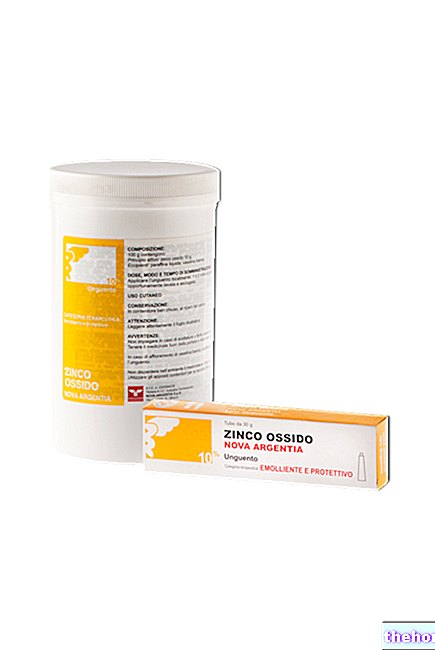
What is Levetiracetam Actavis Group?
Levetiracetam Actavis Group is a medicine that contains the active substance levetiracetam. It is available as an oral solution (100 mg / ml).
Levetiracetam Actavis Group is a 'generic medicine'. This means that Levetiracetam Actavis Group is similar to a 'reference medicine' already authorized in the European Union (EU) called Keppra.
What is Levetiracetam Actavis Group used for?
Levetiracetam Actavis Group can be used on its own in patients from 16 years of age with newly diagnosed epilepsy, in the treatment of partial onset seizures with or without secondary generalization. It is a type of epilepsy in which "excessive electrical activity in one part of the brain causes symptoms such as sudden spasmodic movements of one part of the body, impaired hearing, smell or vision, numbness or sudden fear. Secondary generalization occurs." occurs when hyperactivity subsequently expands to the entire brain.
Levetiracetam Actavis Group may also be indicated as add-on therapy to other antiepileptic medicinal products in the treatment of:
- partial seizures with or without generalization in patients from one month of age;
- myoclonic seizures (short, jerky contractions of a muscle or group of muscles) in patients from 12 years of age with juvenile myoclonic epilepsy;
- primary generalized tonic-clonic seizures (more severe seizures, in which there is loss of consciousness) in patients from 12 years of age with idiopathic generalized epilepsy (the type of epilepsy believed to be of genetic origin).
The medicine can only be obtained with a prescription.
How is Levetiracetam Actavis Group used?
As monotherapy Levetiracetam Actavis Group should be administered at a starting dose of 250 mg twice daily, which should be increased to 500 mg twice daily after two weeks. The dose may be further increased every two weeks based on the patient's response, up to a maximum dose of 1,500 mg twice daily.
When Levetiracetam Actavis Group is added to another antiepileptic therapy, the starting dose in patients over 12 years of age who weigh more than 50 kg is 500 mg twice a day. The daily dose can be increased up to 1 500 mg. twice daily. The starting dose, in patients between six months and 17 years of age who weigh less than 50 kg, is 10 mg per kilogram of body weight twice a day, which can be increased up to 30 mg / day. kg twice a day. In babies aged one to six months, the starting dose is 7 mg / kg twice a day, using the oral solution. It can be increased up to 21 mg / kg twice a day. .
Lower doses are used in patients who have problems with kidney function (such as older patients).
The oral solution can be diluted in a glass of water before taking.
How does Levetiracetam Actavis Group work?
The active substance in Levetiracetam Actavis Group, levetiracetam, is an anti-epileptic medicine. Epilepsy is caused by excessive electrical activity in the brain. The exact mode of action of levetiracetam is not yet fully understood; however, levetiracetam appears to interfere with a protein, called synaptic vesicle protein 2A, which is found in the space between nerves and is involved in the release of chemical transmitters from nerve cells. This allows levetiracetam to stabilize electrical activity in the brain and prevent seizures.
How has Levetiracetam Actavis Group been studied?
As Levetiracetam Actavis Group is a generic medicine, the studies in patients were limited to tests to determine its bioequivalence to the reference medicine Keppra. Two medicines are bioequivalent when they produce the same levels of the active substance in the body.
What benefit has Levetiracetam Actavis Group shown during the studies?
Because Levetiracetam Actavis Group is a generic medicine and is bioequivalent to the reference medicine, its benefits and risks are taken as being the same as the reference medicine's.
What is the risk associated with Levetiracetam Actavis Group?
The most common side effects with Levetiracetam Actavis Group (seen in more than 1 in 10 patients) are sleepiness and asthenia (weakness) or fatigue (tiredness). For the full list of side effects reported with Levetiracetam Actavis Group, see the Package Leaflet.
Levetiracetam Actavis Group must not be used in individuals who are hypersensitive (allergic) to levetiracetam or other pyrrolidone derivatives (medicines with a structure similar to that of levetiracetam) or to any of the other ingredients.
Why has Levetiracetam Actavis Group been approved?
The CHMP concluded that, in accordance with EU requirements, Levetiracetam Actavis Group has been shown to have comparable quality and to be bioequivalent to Keppra. Therefore, the CHMP considered that, as in the case of Keppra, the benefits outweigh the identified risks. and recommended the granting of a marketing authorization for Levetiracetam Actavis Group.
More information about Levetiracetam Actavis Group
On December 5, 2011, the European Commission issued a "Marketing Authorization" for Levetiracetam Actavis Group, valid throughout the European Union.
For more information about Levetiracetam Actavis Group therapy, read the package leaflet (included with the EPAR) or contact your doctor or pharmacist. Last update of this summary: 10-2011.
The information on Levetiracetam Actavis Group published on this page may be out of date or incomplete. For a correct use of this information, see the Disclaimer and useful information page.




























